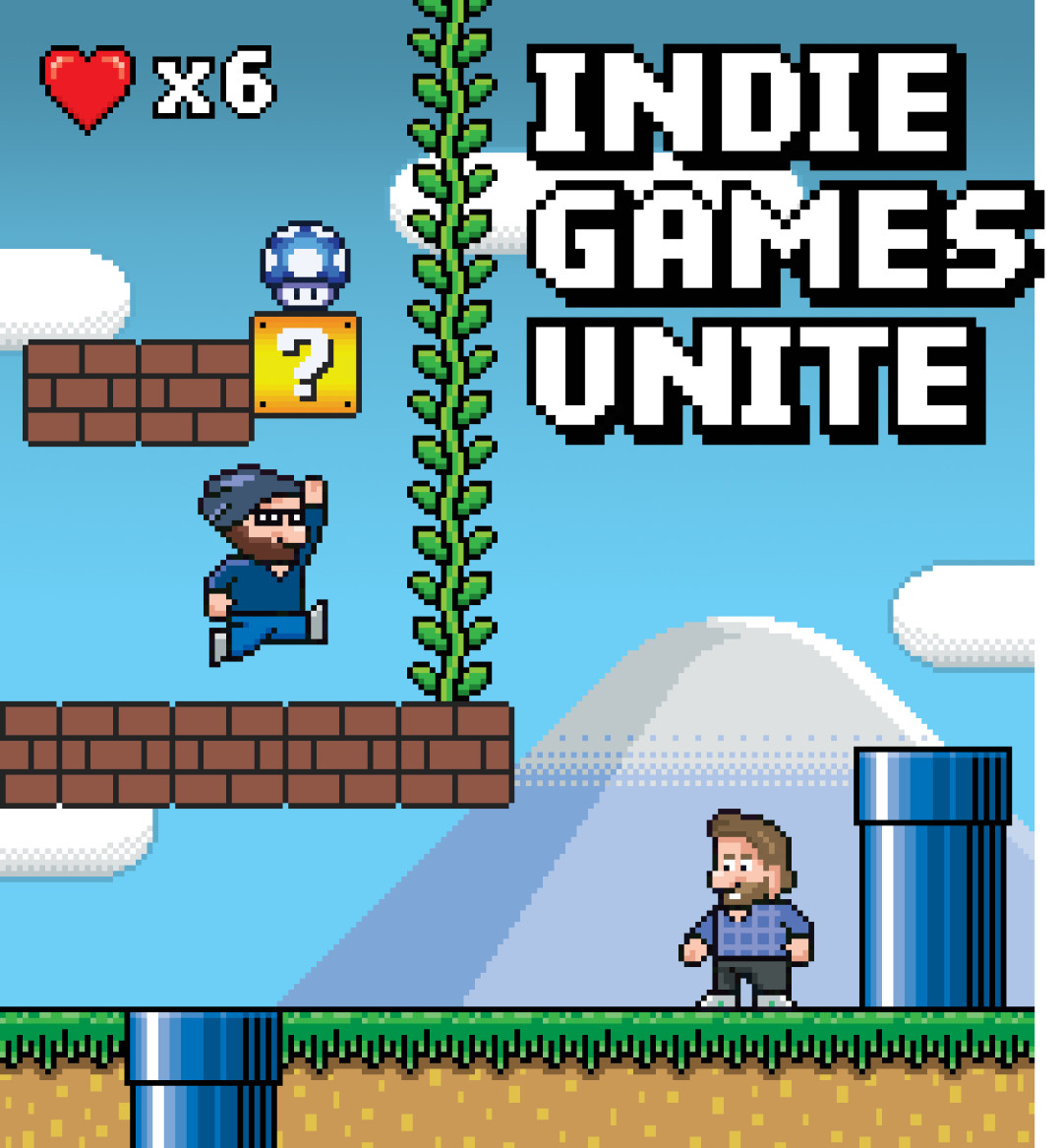Inside the Seattle Indies Expo

Illustration by Quickhoney
The happy hour crowd began to materialize in Melrose Market. It was a Monday in late August 2014, and this throng had just come from the final day of PAX Prime, the largest video game convention in the country. Reps from major studios who’d been showing off their next big first-person shooter or fantasy roleplaying game at the downtown Seattle convention center celebrated by clinking glasses of chilly white wine at Bar Ferd’nand.
Meanwhile, behind an unmarked door in the basement beneath Melrose Market was a room full of rented folding tables. On them sat a hodgepodge of computer screens, CPU towers, and gaming consoles. Some in the crowd chatted and glad-handed while others sat awkwardly and waited for someone to play the little project they created alone, at home, as a labor of love.
Welcome to the Seattle Indies Expo, a sort of punk PAX, full of small, expressive works of interactive art and the local developers who dream them up.
With a game developer community that includes Microsoft, Valve, Nintendo, and Bungie, it should come as no surprise that this city is full of creative types with programming know-how. Their problem was finding an outlet for their out-there ideas. “SIX was initially by developers for developers,” says Paul Schreiber, who helped launch the expo back in 2010. Schreiber works at 17-Bit, an eight-person studio (large by indie standards) in SoDo that debuted its first finished project at the inaugural SIX. “It was just a place to show off games.”
After the first two expos showcased a handful of games for students and developers, in 2013 SIX changed dates to align with PAX Prime and set up shop at Melrose Studios a year later to attract a broader crowd. Zach Aikman is another 17-Bit engineer who has helped run SIX since that move. He says that while PAX Prime dedicates event space to smaller games at its Indie Megabooth, “your game has to be pretty exceptional to get into PAX. But there is also a lot of beauty in games that are not polished.” SIX caters exclusively to Seattle developers who may benefit from the increased industry presence in the city without getting drowned out by the noise of PAX. Neither expo works in opposition to the other, though. “We are both helping spread awareness that games aren’t just made in Japan,” says Christopher Floyd, operations manager for the Indie Megabooth at PAX. “SIX’s great strength is that it’s more homegrown.”
Both PAX and SIX are spreading awareness that games aren’t just made in Japan, says Indie Megabooth's Christopher Floyd.
Many games featured at SIX tend to be more experimental, largely unfinished, and challenge what it even means to be called a game. In one project featured last year, Redshift, players race against time to prevent a futuristic power plant meltdown, clicking through static backdrops that evoke point-and-click adventure titles of the mid-1990s. In another, Memory of a Broken Dimension, shaded in the fuzzy grays of cheap security camera footage, a white dot floats through expanses of urban decay and maps the landscape as if by sonar. There is no goal but to explore.
On the other end of the spectrum, certain exhibitors have a marketable concept without the marketing behind it. Take Sportsball, a game developed for the Nintendo Wii U by Too DX, a two-person team in Bellevue. The project, which combines soccer, jousting, and birds (yes, birds) received modest support from Nintendo at the outset but not the kind it needed to flourish. At SIX 2014, reps from Nintendo showed up, got some real time in with the game, and chatted with Too DX more intimately than PAX allows. Soon after, Nintendo began a three-month promotional campaign for the game.
Jacob McMurray, senior curator at the Experience Music Project, which launched the Indie Game Revolution exhibit last year, saw the promise of this growing scene after attending the international indie gaming convention Indie-Cade. “Unlike working on a Hendrix or Nirvana exhibit, where a story was set and done, all of this personal creativity and empowerment is happening now.” He plans on working with the SIX team to put together a one-off showcase of local developers at EMP.
Last year SIX had just enough developers sign up to fill its 25 slots. This year organizers expect 60 applicants, which means it may only be a matter of time before it leaves the basement for the main stage.




